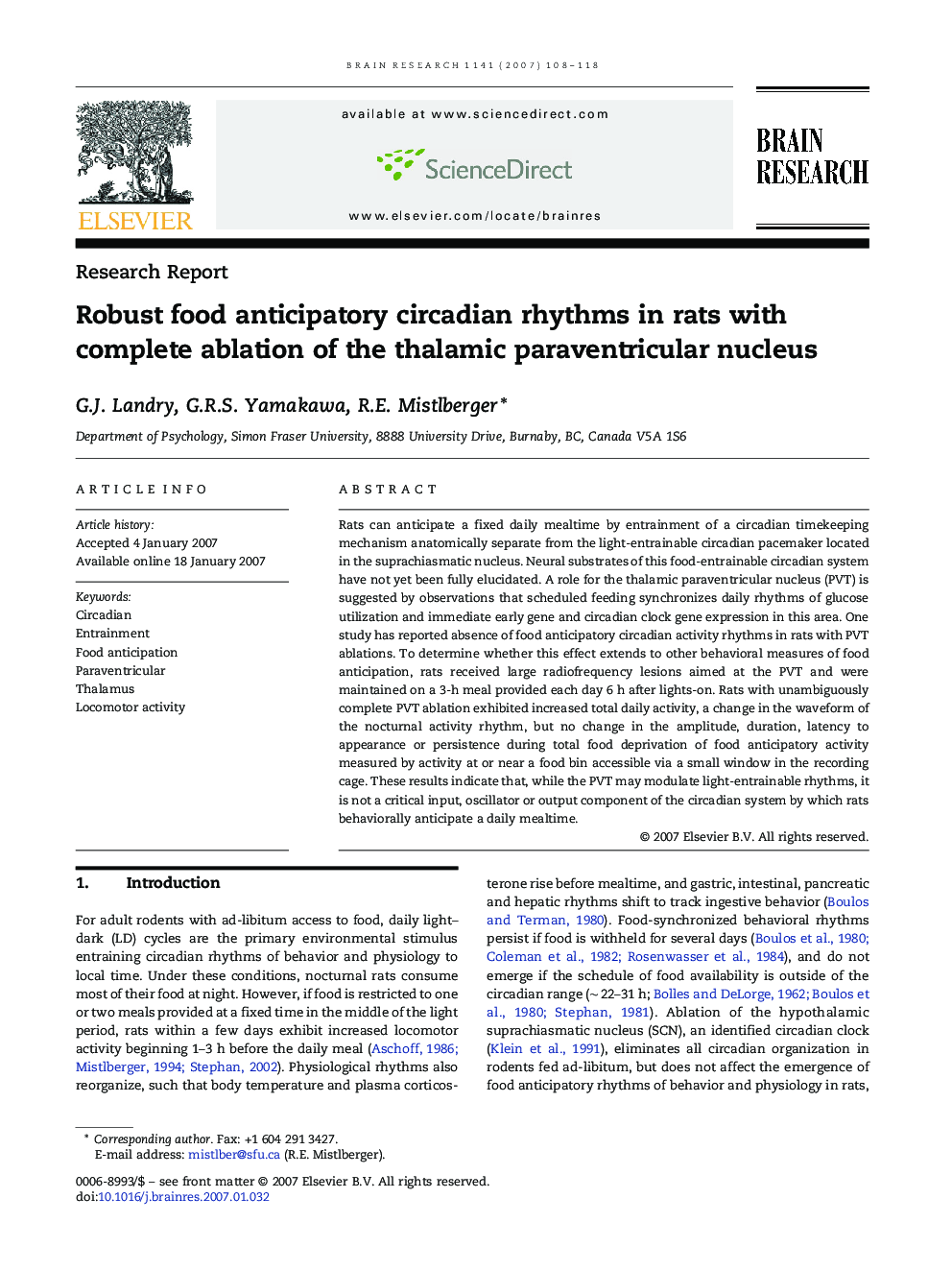| Article ID | Journal | Published Year | Pages | File Type |
|---|---|---|---|---|
| 4331395 | Brain Research | 2007 | 11 Pages |
Rats can anticipate a fixed daily mealtime by entrainment of a circadian timekeeping mechanism anatomically separate from the light-entrainable circadian pacemaker located in the suprachiasmatic nucleus. Neural substrates of this food-entrainable circadian system have not yet been fully elucidated. A role for the thalamic paraventricular nucleus (PVT) is suggested by observations that scheduled feeding synchronizes daily rhythms of glucose utilization and immediate early gene and circadian clock gene expression in this area. One study has reported absence of food anticipatory circadian activity rhythms in rats with PVT ablations. To determine whether this effect extends to other behavioral measures of food anticipation, rats received large radiofrequency lesions aimed at the PVT and were maintained on a 3-h meal provided each day 6 h after lights-on. Rats with unambiguously complete PVT ablation exhibited increased total daily activity, a change in the waveform of the nocturnal activity rhythm, but no change in the amplitude, duration, latency to appearance or persistence during total food deprivation of food anticipatory activity measured by activity at or near a food bin accessible via a small window in the recording cage. These results indicate that, while the PVT may modulate light-entrainable rhythms, it is not a critical input, oscillator or output component of the circadian system by which rats behaviorally anticipate a daily mealtime.
